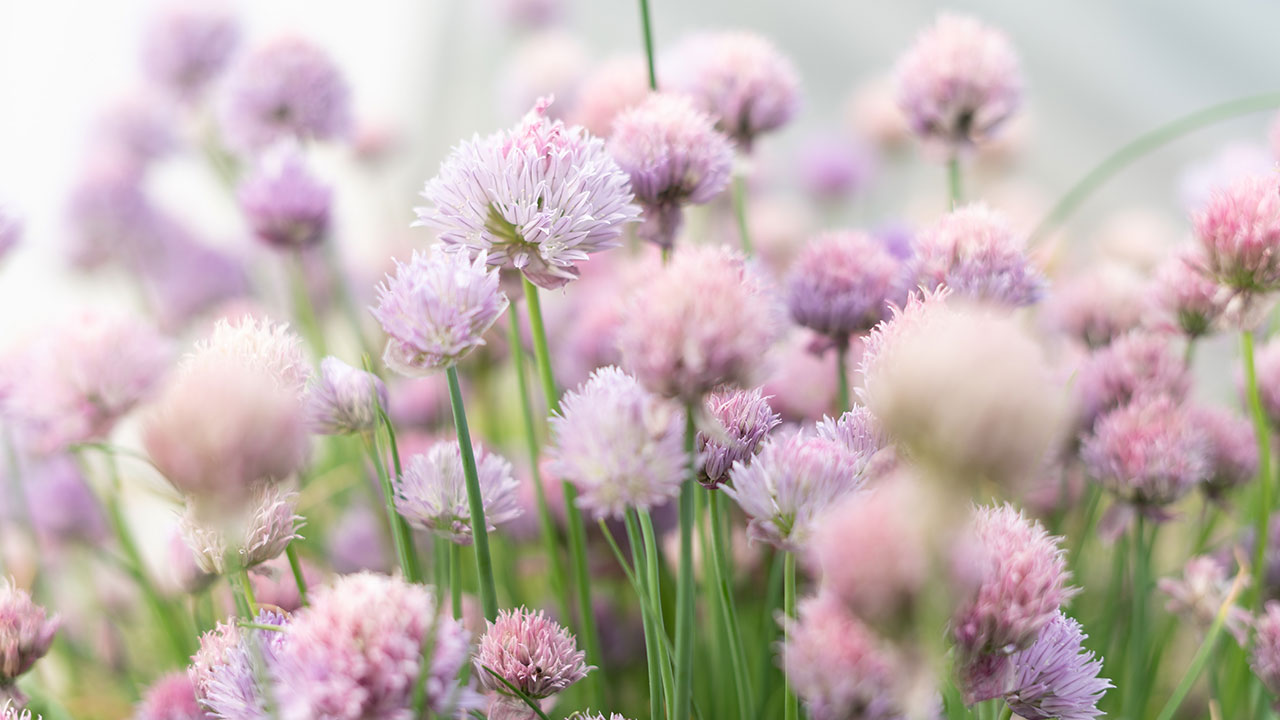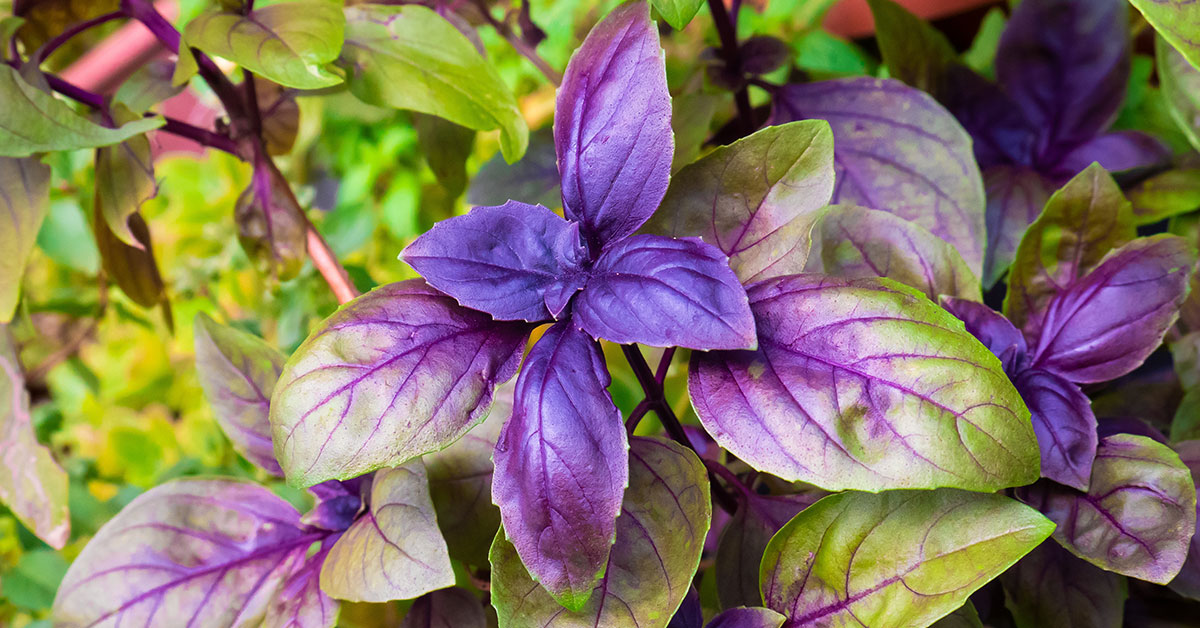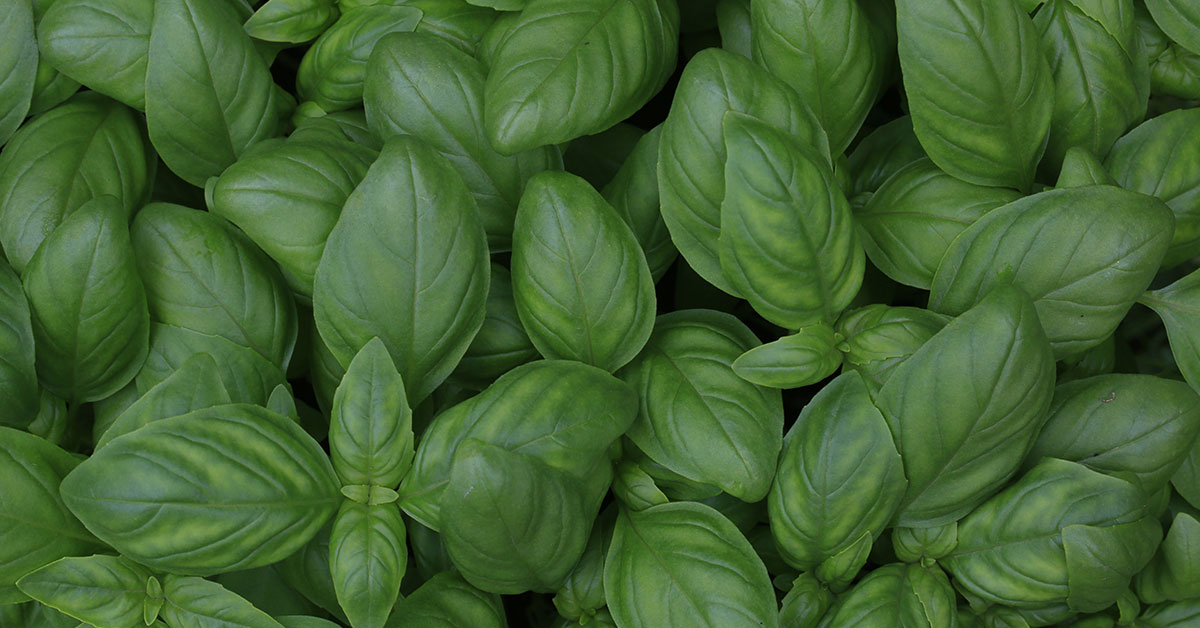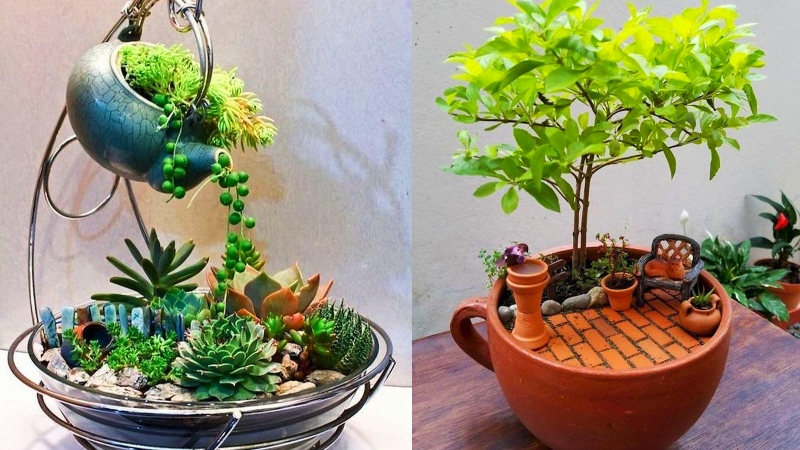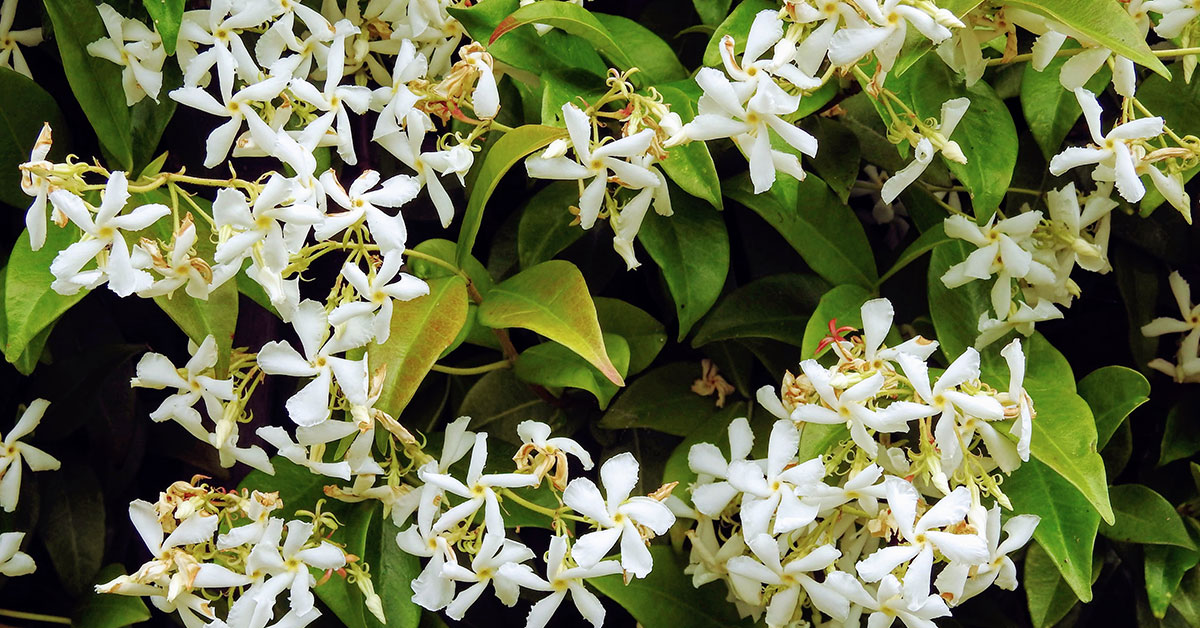When it comes to herb gardening, growing chives is something I don’t think I could do without. Every garden I’ve ever planted has a little section devoted to chives. Their flavor is great and I love their pink, tuft-like flowers. Chives are remarkably easy to grow, often requiring next to nothing from the gardener who gives the plant a home. In this article, we’ll be doing a deep dive into growing this simple herb.
What are chives?
Chives are an herb with a flavor similar to onion but milder. They belong to the genus that includes garlic, onions, and leeks and is native to the Balkans. They grow in clusters with the hollow blades growing straight upwards. These perennial herbs are grown in gardens and kitchens. They are a good source of iron, calcium, phosphorus, potassium, and sulfur. They are used as an aromatic herb and as a garnish.
- Latin Name: Allium schoenoprasum
- Other Names: oriental garlic, Chinese leeks, oriental garlic.
- Native to: Asia and Europe.
- Invasiveness: Not generally invasive
- Tenderness: N/A
- Sun Needs exposure to at least 6 hours of sunlight every day.
- Water: Grows best when watered frequently.
- Soil: Chives prefer fertile, moist, rich, and well-drained soil.
- Hardiness Zone: Chives grow best in Hardiness Zones 3-10 (USDA).
- When To Plant: Chives are best planted in early to mid-spring.
- Spacing: The seeds of Chives should be planted ¼ inches deep, and the final spacing should be 4-6 inches apart in all directions.
- Plant Height: Chives grow to about 10-20 inches high.
- Bloom Period: Mid-spring to early summer.
- Time To Maturity: Normally ready to harvest 60 days after planting seeds.
- Container Friendly: Can be grown in containers both indoors and outdoors.
- Fertilizer: Need fertilizer only if grown as perennial. A light application of general-purpose fertilizer after the first growing season.
- Toxicity: It can be poisonous to dogs and cats.
- Drought Tolerant: Chives are hardy and drought tolerant
- Deer Resistant: Their strong smell repels deer and other small invaders.
- Pest Resistant: The odor of chives repels pests like Japanese beetles and aphids.
How To Grow Chives
Chives grow best in a generous amount of sunlight though they tolerate moderate shade. Ideally, the soil should be moist, fertile, and well-draining. Before planting, add 4-6 inches of well-composted organic matter. Work the compost into the soil to an average depth of 6 – 8 inches.
Sow seeds about 2 inches apart and ¼ inches deep. Cover with a layer of soil. After the seedlings emerge, ensure that the plants are spaced between 4-6 inches apart in every direction. After the flowers bloom, remove them so that the seeds do not spread throughout the garden. Divide the plants every 3-4 years during spring. The regular division makes chives more productive. Divide them into clumps of around 10 small bulbs and allow the divided plants to grow for a few weeks before harvesting.
Harvesting should be done 60 days after seeding or 30 days after transplant. Ensure that you cut the leaves right down to 1-2 inches of the base before you harvest. During the 1st year, harvest 3-4 times and subsequently cut the plants monthly.
Growing Chives In Containers
You can also put several plants in a large container. You will have to space the containers around 6 inches apart. Use pots that have sufficient holes to ensure proper drainage.
Use light and high-quality potting mixture. You can add perlite to improve drainage.
Plant the chive transplants at a depth they were planted in their nursery containers. There should be a gap of 0.5 inches between the rim of the pot and the top of the soil.
Chives can also be transplanted from the ground to the container. First, soften the ground around the chives by adding water to ensure easier digging. Use a pitchfork to gently loosen the soil. Transplant the clump into the container that is filled with a high-quality potting mix that is light. Space as described.
When To Start Chives Seeds
Chives can be grown from seeds. You should start indoors 8-10 weeks ahead of the 1st frost if you want to move the container outside. You can start any time if you plan to keep the herbs indoors.
It can take one year for the seed-grown plants to reach maturity and be ready for harvest.
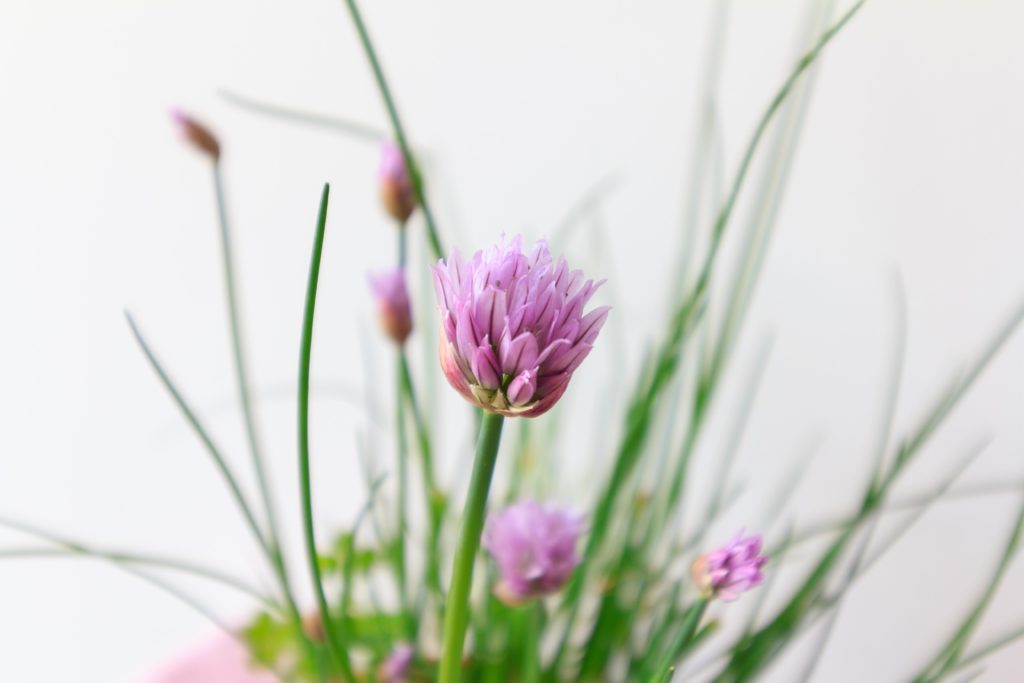
When To Plant Chives
Chives are a cool-season crop. So they grow best in the spring and fall seasons. The harsher summers make the plant dormant, and it grows only once the cool season arrives.
To get ahead in the colder regions, plant the chive seeds indoors at least 6-8 weeks before the last frost of spring. Ensure good growth before the transplants are displaced to the garden.
For outdoors, sow the seeds after the soil becomes workable in spring. They take a few weeks to germinate, and the soils should ideally be between 60-70F (15-21℃). Plant the transplanted plants outdoors only after the risk of frost has passed.
How To Collect Chives Seeds
Chivas plants produce seeds consistently. So they are easily collected. And collecting it from your garden also saves you money. You can collect them after they are done flowering and go to seed. This is sometimes normally in mid-summer. The seeds are produced inside the flower head and are not mature or noticeable till the blooms fade and dry out.
You can be sure that the seeds are ready to harvest when you see dark dots inside the flower heads. Seeds start to fly out when disturbed and then you are sure that the seeds are ready to harvest.
How To Propagate Chives
Chives can be propagated by dividing the plant but growing from seeds is the common method for starting this herb. Growing chives from seeds is a simple process as they germinate easily through slowly. Sow the seeds ½ inch deep in flats of the peat-mixed soilless mix.
Keep the flat consistently moist and in temps of between 60-70F. after the risk of frost passes after 4-6 weeks, the chive seedling can be safely transplanted outdoors. You can also plant directly once the soil is warm at 4-15 inches apart. Propagation can be done from transplant and division also.
How To Harvest Chives
It is an easy process, as young chive leaves are tender and full of flavor, and it is the best time to harvest them. Remove the entire length of the leave and do not just snip off the tip. This will lead to a flush of new growth and can be repeated several times throughout the season.
Hand harvesting is the most common method. Always pull upwards and instead remove the leaves by snapping them sideways. You can also use an herb snip to harvest an entire plant.
How To Dry Chives
Chives can be dried like other herbs. It extends the shelf life and can be used long after harvesting if done correctly. The chives should first be rinsed and then patted dry. Then lay them out in a single layer on a baking sheet that you should pre-line with parchment paper. Place in your oven at the lowest setting, at least 200F or below. Leave the oven door open a few inches to allow air circulation that keeps it from getting overheated.
You can also use food dehydrators using whole leaves. It can take 1-4 hours and will depend on how much you are drying. However, sun and air drying is the most reliable way to dry chives. It dries out in the sun in 2 days. For air drying, hand them up in bundles of 4-5 leaves.
What Do Chives Taste Like
The mild flavor of chives is similar to its close relatives, garlic, and onions, with the onion flavor dominating. But it is way milder and very similar to leeks.
How To Get Chives To Bloom
The best way to get both flowers and a generous harvest is to trim the plant when the first flower buds have just developed. Trim part of the tuft and leave the rest alone. This way you get both a good bloom and a bountiful harvest.
Wildlife Attracted By Chives
Chives attract bees, bumblebees, and other beneficial insects like moths, butterflies, and varieties of wasps. These important species help our gardens immensely by pollinating plants and keeping pests in check, including carrot flies, aphids, and Japanese beetles, which are repelled by the strong smell.
Common Problems
Overwatering is one major problem that can cause root rot and bacterial growth. Underwatering leads to stunted growth and tasteless chives. Excess salinity also affects the natural growth in the garden. Insufficient exposure to light stunts the growth of chives. Ensure 6-8 hours of sunlight. Temperatures below 39F harm the growth and development of the plant.
Lack of space and nutrients can also stunt the growth of chives. Apply synthetic or organic fertilizer whenever the leaves start to yellow. Lack of space in pots may affect growth. Report them and provide fresh nutrients and space.
